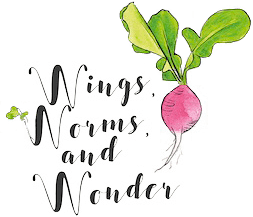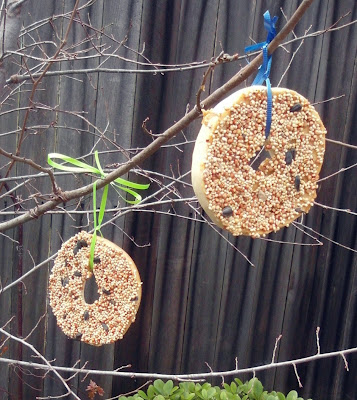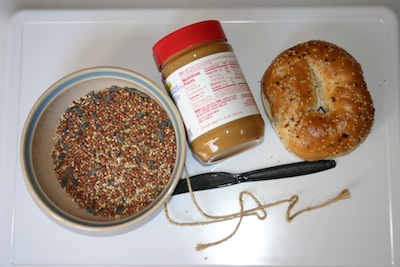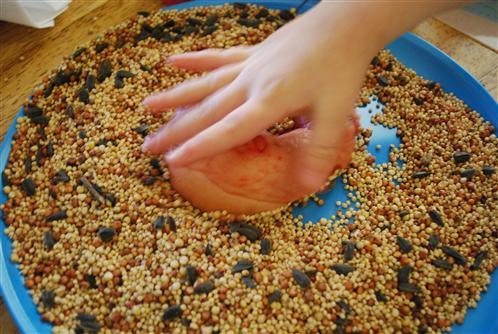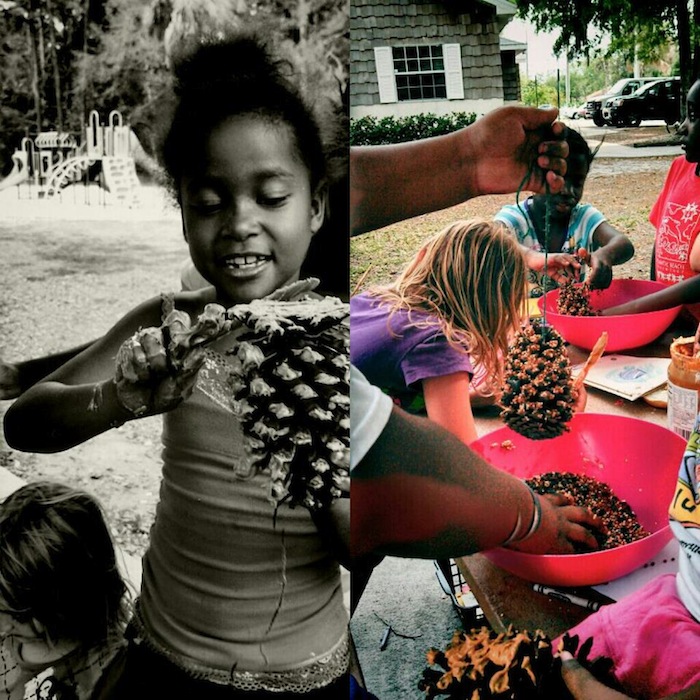Wonder Wednesday #8- Birdseed Bagels
Photo credit: powellfamtx.blogspot.com
Wonder Wednesday Bagel Bird Feeders
Supplies:
Nature journals, rulers, pencils and/or crayons
Scissors and yarn
Book: My First Book of Birds by Sharon Lovejoy, this is a great book because it is part bird fact book, part field guide, and part bird food recipe book! It is great just like all her other books and can be used at various stages of this project. (Don’t let the name fool you. This book isn’t for babies. It also comes with a recycled birdfeeder as an added bonus.)
Bagels- halved or uncut you can decide depending on the # of students vs bagels you have. Also, many bagel shops and bakeries are happy to donate day old bagels. Just arrange with them a couple days ahead of time.
Peanut butter, large size, cheap kind is fine
Bag of Birdseed
Plastic knives or spreaders
2 trays- for the birdseed and bagels
Photo Credit: parentsblog.childcarenetwork.net
Preparation:
Familiarize yourself with the story and lesson plan
Gather journals, pencils, yarn, scissors from Jordan and bring to picnic table
Arrange bagels on a tray, spreader knives, the peanut butter, and the birdseed poured in the tray on the picnic table
Photo credit: www.whattoexpect.com
Procedure:
Ask them if they have noticed all the birds around lately. Have them close their eyes and listen to hear birds. Remind them to save their observations until after the observation time. We must be silent to carefully hear the birds.
Read story to group and engage students in the lives and needs of birds.
Explore the role of birds in the garden. How do birds help the garden? Why do we want to attract them? Do you think wildflowers and flowers will attract birds? Why? (ex. because they provide seeds for the birds to eat)
Today we are going to make bird feeders to attract birds to our garden.
Explain the process: Tie the string around the bagel through the hole, use the spreader to apply peanut butter to the sides of the bagel, then dip the bagel into the birdseed.
Have the children find places, anywhere they like, around the garden to hang their feeders.
Get their journals and draw the feeder and draw any birds they see in the area.
Extra Idea:
Because kids love to eat, you may also want to bring some fresh bagels and sunflower seeds to let the children make bird feeders for themselves to eat also following the same procedure, but using sunflower seeds or a trail mix instead of birdseed.
Photo credit: Brittany Marie (Not bagels I know, but such a great pic with some of our students I couldn’t resist!)
Extensions:
Week 1:
See if the children can remember anything bird facts from the book. Hopefully they have been engaging with the book’s field guide section and the feeders. Have them discuss any birds they have seen around their feeders. Can they identify the birds’ names? Count the number of birds they see near the feeders and in the garden, record the colors of the birds you see. Make a graph of birds by species, color, gender, or chart the number of birds seen each day in the morning and afternoon. Discuss the findings daily at circle times.
Week 2:
Check the feeders. Are any left? Where are the ones left located? Why do you think they are still there? Does the weather appear to make a difference in how the birds have fed? Begin to use the observations and discoveries to create a schoolyard bird field guide of our own or write a class newsletter/blog about the birds outside your door. Take time to listen for birds. Give time to those who would like to do free work (drawing, poetry, etc.) in their journals.
Week 3:
Are there less birds now than there were a couple weeks ago? Why? Have they noticed that the birds they see now are different? Can you identify any? Are they migrating? Observe and document birds in the journals. Discuss which birds they observed are migratory and which are year round residents. Use the charts and graphs to determine this and then check your discoveries in field guides.
